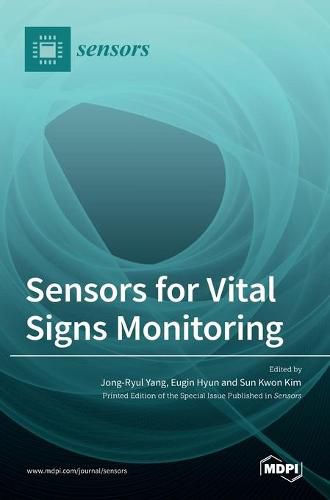Readings Newsletter
Become a Readings Member to make your shopping experience even easier.
Sign in or sign up for free!
You’re not far away from qualifying for FREE standard shipping within Australia
You’ve qualified for FREE standard shipping within Australia
The cart is loading…






This title is printed to order. This book may have been self-published. If so, we cannot guarantee the quality of the content. In the main most books will have gone through the editing process however some may not. We therefore suggest that you be aware of this before ordering this book. If in doubt check either the author or publisher’s details as we are unable to accept any returns unless they are faulty. Please contact us if you have any questions.
Sensor technology for monitoring vital signs is an important topic for various service applications, such as entertainment and personalization platforms and Internet of Things (IoT) systems, as well as traditional medical purposes, such as disease indication judgments and predictions. Vital signs for monitoring include respiration and heart rates, body temperature, blood pressure, oxygen saturation, electrocardiogram, blood glucose concentration, brain waves, etc. Gait and walking length can also be regarded as vital signs because they can indirectly indicate human activity and status. Sensing
technologies include contact sensors such as electrocardiogram (ECG), electroencephalogram (EEG), photoplethysmogram (PPG), non-contact sensors such as ballistocardiography (BCG), and invasive/non-invasive sensors for diagnoses of variations in blood characteristics or body fluids. Radar, vision, and infrared sensors can also be useful technologies for detecting vital signs from the movement of humans or organs. Signal processing, extraction, and analysis techniques are important in industrial applications along with hardware implementation techniques. Battery management and wireless power transmission technologies, the design and optimization of low-power circuits, and systems for continuous monitoring and data collection/transmission should also be considered with sensor technologies. In addition, machine-learning-based diagnostic technology can be used for extracting meaningful information from continuous monitoring data.
$9.00 standard shipping within Australia
FREE standard shipping within Australia for orders over $100.00
Express & International shipping calculated at checkout
This title is printed to order. This book may have been self-published. If so, we cannot guarantee the quality of the content. In the main most books will have gone through the editing process however some may not. We therefore suggest that you be aware of this before ordering this book. If in doubt check either the author or publisher’s details as we are unable to accept any returns unless they are faulty. Please contact us if you have any questions.
Sensor technology for monitoring vital signs is an important topic for various service applications, such as entertainment and personalization platforms and Internet of Things (IoT) systems, as well as traditional medical purposes, such as disease indication judgments and predictions. Vital signs for monitoring include respiration and heart rates, body temperature, blood pressure, oxygen saturation, electrocardiogram, blood glucose concentration, brain waves, etc. Gait and walking length can also be regarded as vital signs because they can indirectly indicate human activity and status. Sensing
technologies include contact sensors such as electrocardiogram (ECG), electroencephalogram (EEG), photoplethysmogram (PPG), non-contact sensors such as ballistocardiography (BCG), and invasive/non-invasive sensors for diagnoses of variations in blood characteristics or body fluids. Radar, vision, and infrared sensors can also be useful technologies for detecting vital signs from the movement of humans or organs. Signal processing, extraction, and analysis techniques are important in industrial applications along with hardware implementation techniques. Battery management and wireless power transmission technologies, the design and optimization of low-power circuits, and systems for continuous monitoring and data collection/transmission should also be considered with sensor technologies. In addition, machine-learning-based diagnostic technology can be used for extracting meaningful information from continuous monitoring data.